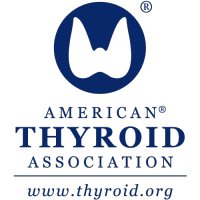Ellen Meyers*, a 65-year-old woman, was diagnosed with Graves disease and started medications to block her thyroid hormones. Before that, she was proud of her good health, claiming that her healthy diet and regular exercise kept her away from chronic health issues like hypertension and hyperlipidemia. But Ellen couldn't have avoided her strong family history of thyroid disorders such as Graves disease.

Joanna Miragaya, MD, PhD
Ellen opted for medical therapy and is taking methimazole daily. Since being on this medication, she feels much better and her thyroid-stimulating hormone (TSH) levels have normalized. Most recently, Ellen had a bone density study done by her primary care physician, which revealed osteopenia, and she wonders whether the osteopenia is related to her thyroid disease.
Thyroid and bone physiology are interrelated; thyroid hormones directly affect bone remodeling and resorption via osteoclastic and osteoblastic activities. TSH may also directly affect bone formation and resorption.
In 1891, Frederick von Recklinghausen first described bone disease related to hyperthyroidism in a woman who eventually died of hyperthyroidism. He described the appearance of her bones as "worm-eaten."
Bone loss, which is associated with overt hyperthyroidism, can range from 10% to 20% in patients with hyperthyroidism, probably due to an increase in bone remodeling and a decrease in bone density, therefore increasing fracture risk. It's commonly seen in postmenopausal women but less so in premenopausal females and men. Furthermore, bone loss is noticeable in overt hyperthyroidism but not in subclinical hyperthyroidism, from either exogenous or endogenous sources.
The most common causes of overt and subclinical hyperthyroidism include Graves disease, autonomous functioning thyroid adenomas, and multinodular goiters. Excessive thyroid hormone therapy, such as that used as a suppressant for thyroid cancer, can also cause hyperthyroidism.
Reversibility of bone loss after initiation of therapy for hyperthyroidism varies on the basis of not only the bone loss but also fracture risk — including whether there are any previous or new fractures — and whether the hyperthyroidism is overt or subclinical.
Studies have shown that patients with endogenous or exogeneous subclinical hyperthyroidism can also have a decrease in bone mineral density (BMD), similar to that seen in overt hyperthyroidism, but this decrease has been encountered only in postmenopausal women, and not in men and premenopausal females. Though subclinical hyperthyroidism doesn't seem to increase the risk for fractures in postmenopausal women overall, certain subpopulations might be at an increased risk for fractures, probably based on degree of TSH suppression, older age, and other fracture risks.
Improvement of BMD can be seen within the first year of therapy for hyperthyroidism. In addition to initiation of antithyroid drugs for hyperthyroidism, it's important to counsel patients about vitamin D3 and calcium intake to maintain strong bones. The current recommended intake of calcium is 1000-1200 mg daily (based on diet and/or supplements); for vitamin D3, it's 800-1000 units daily. Use of bisphosphonates in patients with hyperthyroidism should be determined on the basis of fracture risk.
Compared with the data for hyperthyroidism, that for overt hypothyroidism remains controversial. In fact, bone loss isn't expected when hypothyroidism is corrected and treated properly. However, it is thought that hypothyroidism treatment may cause a temporary increase in bone resorption but decrease BMD initially, though this was noted only in women, not men. Furthermore, some studies didn't find an increased risk for hip fractures or decrease in BMD in patients with subclinical hypothyroidism.
Several thyroid and endocrine organizations recommend treatment for overt hyperthyroidism and in cases of subclinical hyperthyroidism, such as that associated with medications, radioactive iodine, or surgery.
Although the data on decreased BMD aren't clear in hypothyroidism, patients with overt hypothyroidism and specific cases of subclinical hypothyroidism should be treated with thyroid hormone replacement.
Physicians should evaluate bone health using dual-energy x-ray absorptiometry (DEXA) in postmenopausal women, men over 70 years old, and premenopausal females and younger men who have undergone fracture-risk calculation. Patients should also be educated about dietary needs, including supplementation with calcium and vitamin D3.
*The patient's name has been changed.
For more diabetes and endocrinology news, follow us on Twitter and Facebook.
Follow Medscape on Facebook, Twitter, Instagram, and YouTube
Credits:
Lead image: Rattanachot2525/Dreamstime
Image 1: Clix portrait studios
© 2023 WebMD, LLC
Cite this: Preventing 'Worm-eaten Bones' From Hyperthyroidism - Medscape - Jul 31, 2023.











Comments